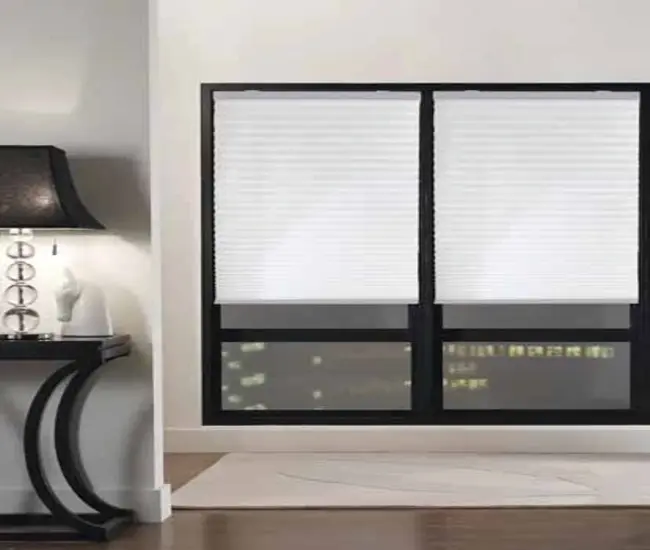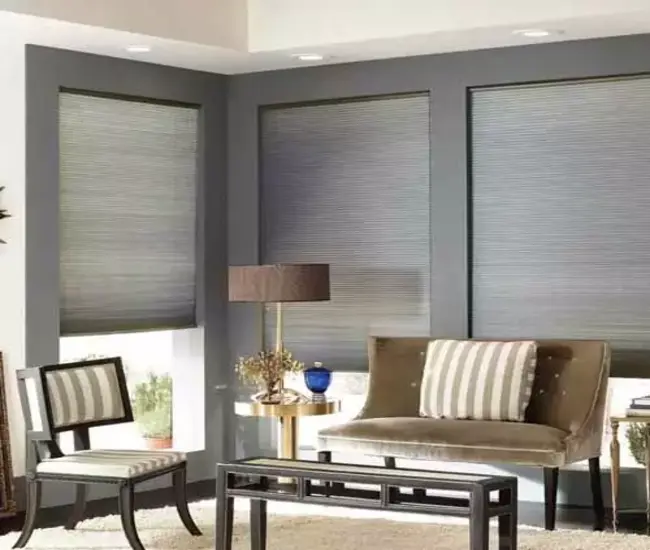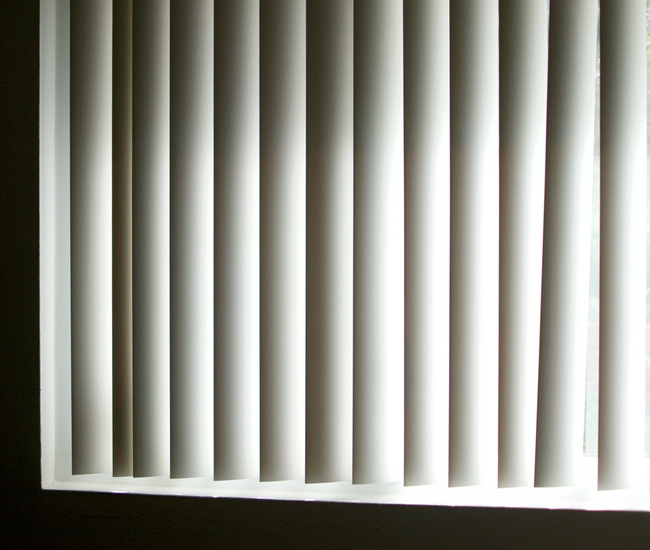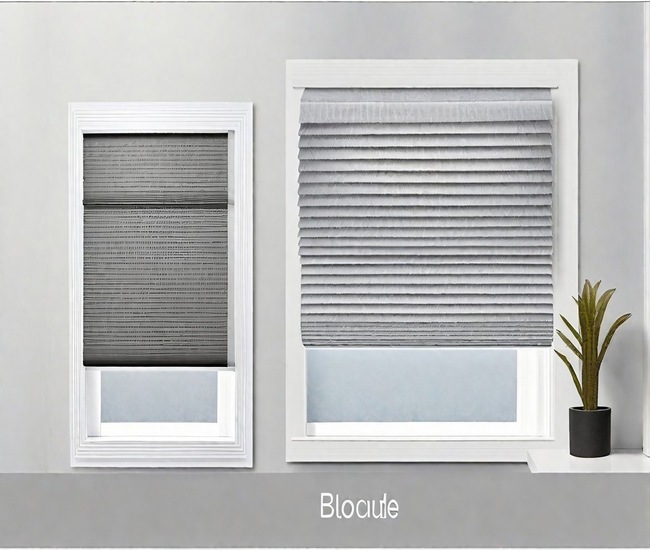Looking for an easy, effective way to cover the skylight from the inside or outside for seamless control of light, heat, and cold without compromising your decor? Skylight blinds, shades, curtains, and reflective films are some of the best ways to block out up to 90% of light, heat, or cold entering your home’s or office’s interior through the skylight.
You can install them inside or outside the skylight frame using brackets or suction cups. You can motorize your skylight covers and operate them using a wireless remote.
The preferred installation option – inside mount or outside mount – will depend on your needs, style of your room, and functional requirements. Here is a comprehensive guide about how to cover skylights from the inside and outside for the desired function and look.
There will be different measurement procedures for inside and outside mount window treatments for skylights. For example, you need to consider the depth of your skylight’s window frame for inside installation.
Here you will learn about several types of skylight covers from inside and outside, including Venetian blinds, pleated shades, reflective films, cellular blinds, and solar powered skylight blinds. These options are the perfect way to cover a skylight while still providing the light control and insulation you need. Just read on to learn more!
Practical Options to Cover Skylights from the Inside or Outside
Skylights are often the focal point of a room, so you need to choose skylight window treatments that match the design of the room. Different window treatments like pleated shades, Venetian blinds, solar powered skylight blinds, and reflective films come with the options to cover your skylights from inside and outside.
Pleated Shades – A Durable & Affordable Choice to Cover Skylights

You can add a sophisticated touch to your home with pleated shades to cover skylights from inside and outside. These skylight shades can be made in a variety of sizes, styles, colors, and fabrics.
Pros
- Pleated shades are a single piece of fabric, which makes them perfect for blocking out sunlight coming in from the skylight.
- They can easily fold up when you need to let in external light.
- They are designed to be durable, so they’ll last longer on your skylights.
- Pleated shades are an affordable choice for skylights, as they tend to be less expensive than some other types of window treatments.
Cons
- Pleated shades are not as energy efficient as honeycomb blinds.
- They have holes where the lift cords run through.
Cellular Skylight Shades for Best Insulation & Energy Efficiency

You can choose insulating cellular shades for covering skylights. They are available with both light filtering and room darkening features to make your home feel even more luxurious. For media rooms, a room-darkening or blackout fabric will help reduce glare.
The benefits of installing skylight cellular shades are clear. They’ll protect your home from sunlight, heat, and UV rays while blocking out glare. A great way to control glare from the skylight is to use ceiling mounted skylight shades.
No matter what style you choose, your new skylight shades will look great from inside and outside.
Because they trap heat and cool the air, honeycomb or cellular shades are a great choice for covering skylights. They are available with both inside and outside mounting options.
Match and coordinate the color of the room and the skylight shade that you choose.
A kitchen skylight, on the other hand, does not need total darkness. Choosing the right fabric will allow natural light to filter through, while preventing harsh rays.
Pros
- Cellular shades operate on a durable track and come in light-filtering and blackout fabrics. Room-darkening fabrics are particularly beneficial in bedrooms.
- In addition to blocking out light, they offer a degree of privacy and insulation.
- The honeycomb structure of these skylight shades helps reduce energy costs and protects you from glare.
- The honeycomb fabrics for skylight shades are made from high-quality polyester and are very energy-efficient.
- These skylight window treatments can be operated manually with an extension pole or automatically with motorization.
- They can be removed and replaced as needed once they are installed.
- These skylight shades come with easy-to-handle mounting hardware and they are easily available at online stores.
- Skylight shades made from beautiful fabrics will blend in with the surroundings without distracting the eyes.
Cons
- The honeycomb compartments in cellular shades can collect dust and dirt, causing cleaning difficulties.
- The cellular fabric can stain over time.
Venetian Blinds

A bare skylight window can ruin a room that has been decorated in neutral tones. Adding Venetian blinds can complement your decor and help complete the look. Make sure you choose a material that matches your decor when choosing blinds for skylights.
Natural light can brighten dark rooms, but you don’t need it all day. If you prefer to keep the room darkened, open the blinds during daylight and turn the lights off at night.
They help to control light, and thus, make the interiors more comfortable in the summer.
Pros
- These blinds are an excellent choice for controlling the amount of natural light that enters a room through the skylight.
- They also help to reduce solar heat, which is uncomfortable during the hot summer months.
- You can tilt the slats of skylight to let in some sunlight while blocking out the rest of it.
- Venetian blinds can be used to cover skylights from inside and outside for several benefits.
Cons
- Slats of Venetian blinds are more prone to mechanical damage.
- Venetian blinds can make noise when breeze is blowing through them or when you adjust the skylight for the required amount of natural light.
Solar Powered Skylight Blinds – A Free, Automatic Skylight Covering Running on Green Energy
Solar powered skylight blinds come with inside and outside mount options for skylights and offer complete functionality, allowing you to control how much light and heat is let into your home.
Solar powered light filtering blinds are compatible with most types of stock-sized skylights in your home. These inside and outside mount skylight blinds can be factory-installed, so you don’t have to worry about running wiring through your home. This option also saves you the trouble of installing a wiring system, as the blinds simply snap into place from inside or outside.
Skylight blinds can be installed to cover skylights in your attic and vaulted ceilings if you have a solar powered roof light. These window treatments are available in over 100 colors, allowing you to choose the perfect blinds to match your room’s personality.
These window treatments can make any room look extraordinary and are great for your home. These window treatments are affordable and add style to any room.
Pros
- Solar powered skylight blinds are a great way to cover skylights and filter light.
- These skylight coverings are powered by solar energy and are operated with a remote control.
- They do not require any wiring or electricity, and are therefore more environmentally friendly than electric skylights. They are also completely solar-powered, so they don’t require any other power input.
- Solar powered skylight coverings can cut down on your energy bills.
- They are ideal for skylights of bathrooms, kitchens, and living rooms.
- They come with rechargeable batteries, which can last anywhere from six to twelve months.
- These shades can be operated manually. However, most solar powered skylight blinds are motorized so you can control them with a wireless remote.
Cons
- They take 4 to 5 inches of your skylight opening.
- Solar powered skylight shades may involve a hefty first-time investment.
Reflective Films to Divert the Sun’s Harsh Rays
There are plenty of reasons to install reflective films to cover your skylight. The film covering the skylight from inside or outside blocks the sun’s rays and helps maintain the temperature, cutting down on your home’s cooling costs in summer.
There are two types of skylight reflective films: sputtered and hybrid. Sputtered reflective films provide clear views of the sky while hybrid reflective films block both UV and solar heat. These skylight film options are not as effective as aluminum skylight covers but they are still an option for those who want their skylights to remain clear.
If you want to get the most benefits out of the window treatment, choose a high-quality reflective window film.
Whether installed inside or outside the skylight window frame, reflective window films provide functionality and decorative appeal. The reflective effect is reversed during the night. While this type of film isn’t designed to keep out unwanted views during the night, it does the job well and is very affordable.
Before buying the best reflective film, you should understand its properties. The SHC (Solar Heat Gain Coefficient), is an important measurement to consider. This measurement indicates how effective the film is at blocking UV and visible light. A higher U-value means that more UV and visible light are rejected, while a lower SGC means less reradiated heat is allowed to enter the building. Infrared rejection is another important parameter to look for.
A single-way film is ideal for home offices and entertainment rooms, while the other allows natural light to come in. Multi-directional reflective films are best if you want privacy and light reduction.
Pros
- Reflective films will provide sun protection, privacy, and security.
- Inside and outside mount reflective films for skylights not only block out heat and glare.
- They can also block cold from entering your home in winter, which can help you save money on your heating costs.
- With reflective film covering the skylight, you won’t get high electricity bills.
- They involve a relatively easy and inexpensive installation process.
Cons
- Window film to cover the skylight from inside or outside can be expensive.
- One-way films won’t work at night because they will flip the other way when it gets dark outside.
How to Measure for Skylight Covers for Inside and Outside Mount

Here is our DIY step-by-step guide on how to measure skylights for skylight blinds, shades, or curtains to get started.
- Measure Width: Measure the width of the skylight opening at top, middle, and bottom. Record the narrowest value.
- Measure Length: Measure the length of the skylight in the left, middle, and right. Record the shortest measurement. For example, if the measurements are 32”, 32 ¾”, and 32 ¾”, order skylight blinds or shades measuring 32 inches (10 ft) in length.
- Measure Depth for Inside Mount: Accurately measure the depth of your skylight’s frame if you want to go with an inside mount.
Installation Instructions for Perfect Fit of Skylight Covers

For an inch-by-inch, edge-to-edge fit, follow DIY step-by-step guide on how to install skylight blinds, shades, and curtains.
- Step 1: Drill holes (using a ⅜-inch drill bit) in the skylight frame.
- Step 2: Set up and secure the brackets with screws and a screwdriver.
- Step 3: Hang your skylight covers.
FAQs
How to cover skylights from inside?
Skylight blinds and shades are among the best ways to cover skylights (roof windows) from the inside. When choosing the best skylight window coverings, consider the direction they’ll face (east, west, north, south), their style (fixed, tubular, or ventilating), color, size, and desired function (light filtering, blackout, insulating).
The easiest way to treat skylights from insides is to paint them or pastel window cling covers. Both would be removable.
Can you put curtains on a skylight?
The answer is yes! DIY curtains held by suction cups on the skylight frame won’t drape down, making them a perfect option to control light and block out heat coming in from the skylight.
How do you cover a skylight in the summer?
Covering your skylight with a cellular blind in summer is the best thing you can do for filtered light, insulation, comfort, energy costs, and mother nature. An easier and more permanent solution is to install UV reflective window films from the inside or outside the skylight.
How do you block the heat from a skylight?
Putting up skylight shades and covers is the best way to block the heat from a skylight, keep your home cool and energy efficient in summer. With skylight covers, you can block the solar heat and keep the inside of your room from becoming too hot during the summer. For better heat insulation, fold the fabric 3” to 5” on each side.
Need More Help?
Still unsure how to cover skylights from inside and outside for better light control and insulation? Contact our professionals using 24/7 live chat or give us a ring at (800) 863-6109 for expert advice and a custom solution.
